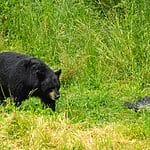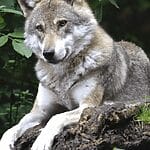9 Common Dangerous Animals in Virginia You Need To Know About
Virginia, known for its rich history and beautiful landscapes, is also home to a variety of wildlife. Among these creatures are some that can be dangerous to humans.
From the stealthy copperhead snakes to the mighty grizzly bears, Virginia’s diverse ecosystems host a range of animals that can pose risks.
Understanding these animals is crucial for both residents and visitors. Many people are unaware of the potential dangers lurking in the wilderness and how to safely coexist with these creatures. This lack of knowledge can lead to unsafe encounters or harm to both humans and animals.
In this article, we’ll look into the details of Virginia’s most dangerous animals. We’ll explore where they live, their behaviors, and how to avoid dangerous interactions.

National Parks to Find Common Dangerous Animals in Virginia
From the towering peaks of Shenandoah National Park to the rolling hills of the Blue Ridge Parkway is home to most common dangerous animals as national parks here has to offer something for everyone.
Shenandoah National Park
Shenandoah National Park is a Beautiful Park with Dangerous Animals living in Virginia. It has a variety of wildlife, including black bears, timber rattlesnakes, copperheads, and deer.
The park is also home to stunning views of the Blue Ridge Mountains, as well as a variety of hiking trails, camping spots, and scenic overlooks. There are an estimated 5,000 timber rattlesnakes, 20,000 copperheads in the park and 150,000 deer in the park.
Assateague Island National Seashore
Assateague Island National Seashore is a barrier island located off the coast of Maryland and Virginia. It is home to a variety of wildlife, including wild horses, deer, foxes, and many species of birds. The park is also known for its beautiful beaches, dunes, and marshes.
The most famous animals on Assateague Island are the wild horses, deer, foxes and over 300 bird species. The trails offer stunning views of the beaches, dunes, and marshes.
Great Falls Park
The thundering falls of Great Falls Park are a sight to behold. But beware, this beautiful place is also home to some dangerous animals.
The most dangerous animal in Great Falls Park is the copperhead snake. These venomous snakes are found throughout the park, especially in rocky areas and near streams. If you see a copperhead, it’s best to give it a wide berth.
Another dangerous animal in Great Falls Park is the black bear. These large mammals are not usually aggressive, but they can be if they feel threatened.
Let’s Explore the 9 most Common Dangerous Animals in Virginia
Here we have enlisted some of the 9 most common dangerous animals found in Virginia.
Bull Sharks

Bull shark found in warm, shallow waters around the world, including coastal areas, rivers, and even lakes. They are a large and aggressive species of shark, and they are considered to be one of the most dangerous sharks in the world.
Bull sharks are dangerous animals, and they eat different sea animals, such as fish, turtles, birds, and mammals. They are also known to scavenge.
Bull sharks are ovoviviparous, meaning that the eggs hatch inside the mother’s body and the young are born live. The gestation period is about 12 months. They are listed as near threatened on the IUCN Red List.
Great white sharks

They are one of the most dangerous animals, and live off the coast of Virginia Beach. Great white sharks are apex predators and can grow up to 20 feet long and weigh up to 4,000 pounds.
Great white sharks are carnivores and their diet consists of marine mammals, such as seals, sea lions, and dolphins. They also eat fish, such as tuna and swordfish.
Great white sharks are ovoviviparous, meaning that the eggs hatch inside the mother’s body and the young are born live. The gestation period is about 11 months, and the litter size is typically 2-14 pups.
Great white sharks are the most common dangerous animals and are listed as vulnerable on the IUCN Red List of Threatened Species. The main threats to great white sharks are overfishing habitat loss, and shark finning.
Grizzly Bears

Grizzly bears are large, powerful bears that are found in North America. They are typically found in mountainous and forested areas, and they can be found in Alaska, Canada, and the western United States.
Grizzly bears are omnivores, and their diet consists of a variety of foods, including berries, fish, rodents, and even large mammals.
Bears’ attacks on humans are rare, but their attack can cause serious injuries and even death. So, if you go into forest or mountainous areas you must carry bear spray as a safety measure.
Grizzly bears are listed as a threatened species in the United States, and their population is estimated to be around 50,000.
Copperhead Snakes

Copperhead snakes are common venomous snake found in the eastern North America, southern New England to Florida and west to Texas. They are medium-sized snakes, growing to about 2-3 feet long.
These are venomous snakes, but their venom is not as dangerous as some other pit vipers. They are typically docile snakes, but they attack when feel threatened.
Copperheads eat a variety of small animals, including rodents, frogs, and lizards. These snakes are not considered to be endangered or threatened.
Snapping Turtles

Snapping turtles are large, freshwater turtles that are found in North America. They are known for their aggressive nature and their strong bite.
Their diet includes small fishes, frogs, snakes, and small mammals. They are also known to scavenge, and eat carrion if they get the opportunity.
These turtles mate between April and November. They lay 20 to 40 eggs in May or June, which hatch after 80 to 90 days. Snapping turtles are listed as a species of least concern by the IUCN Red List. However, they are facing the issues of the habitat loss and fragmentation.
Timber Rattlesnake

It is one of the most dangerous creatures found in eastern North America. It is also known as the canebrake rattlesnake or banded rattlesnake.
Timber rattlesnakes are typically found in forests and woodlands, but they can also be found in other habitats, such as swamps and meadows.
These venomous snakes are carnivores and feed mainly on the small mammals, birds, and reptiles. They are ovoviviparous, and give birth to 8 to 15 snakes per liter.
Timber rattlesnakes are listed as Least Concern on the IUCN Red List, but their populations are declining due to habitat loss and fragmentation.
Eastern Cottonmouth Teddy Snake

The Eastern Cottonmouth Teddy Snake is a large, venomous snake found in the eastern United States. It is also known as the water moccasin or swamp lion.
Eastern Cottonmouth Teddy Snakes are typically found in swamps, marshes, and other wet areas. They eat a variety of animals, including frogs, fish, and small mammals.
Eastern Cottonmouth Teddy Snakes are ovoviviparous, and their young ones are typically independent of birth.
One interesting fact about these snakes is that they can change their skin color to match their surroundings. This helps them to camouflage themselves from predators.
Eastern Cottonmouth Teddy Snakes are not considered to be endangered or threatened. However, they are still venomous snakes and should be treated with caution.
Black Bears

Black bears are found in North America, from Alaska to Mexico. They are omnivores and their diet varies depending on the season.
In the summer, their diet is dependent on fruits, insects, and fish. In the winter, they hibernate and live off of their stored body fat.
Black bears are solitary animals, except for during the breeding season. Females give birth to 1-3 cubs in the spring. The cubs stay with their mothers until they reach at the age of 1-2 years.
Their weight is around 400 lbs, and they have razor-sharp claws and teeth. They only attack humans if they sense danger, so if you encounter a bear attack seek medical attention immediately
These bears are an important part of the ecosystem and they help to control populations of other animals. They are also a popular tourist attraction and people enjoy watching them in their natural habitat.
Black Widow Spiders

Widow spiders are common dangerous animals in Virginia, but they are most common in the America. They are venomous spiders and their bite can be fatal to adults, and specifically for children.
The red hourglass marking on the abdomen of a widow spider is a warning to predators. Widow spiders can live for up to 3 years.
Widow spiders are an important part of the ecosystem and they help to control insect populations. However, they are also feared and misunderstood by many people.
Widow spiders are listed as Least Concern on the IUCN Red List of Threatened Species. However, they are still vulnerable to habitat loss and persecution by humans.
Here’s a list of the most endangered animals in Virginia.
National Animal of Virginia
The American Foxhound is the national animal and one of common dangerous animals in Virginia. It is a medium-sized dog with a long, narrow head, drooping ears, and a deep chest. American Foxhounds are known for their speed, stamina, and keen sense of smell.
Frequently Asked Questions
What is the biggest predator in Virginia?
The biggest predator in Virginia is the black bear. Black bears can stand up to 6 feet tall on their hind legs and weigh as much as 600 pounds. They are widely distributed across Virginia, inhabiting the dense forests of the western part of the state and even some suburban areas around Richmond.
What are some predators in Virginia?
Black bear, pumas and bobcats are some predators in Virginia.
What is the most common animal in Virginia?
White-tailed deer is the most common animal in Virginia.
Does Virginia have big cats?
Bobcat is the only big cat found in Virginia.
What animals live in Virginia Beach?
Virginia Beach is a hotspot for wildlife, hosting a variety of species. Migratory birds such as snow geese and Canadian geese frequent the Back Bay National Wildlife Refuge. Marine life includes humpback whales and bottlenose dolphins. The area also supports land animals like white-tailed deer and red foxes.
- 6 Animals That Are Not Mammals - 2024-04-28
- 9 Common Dangerous Animals In Virginia - 2024-04-28
- 12 Common Dangerous Animals in Puerto Rico – You May Not Know - 2024-04-25









